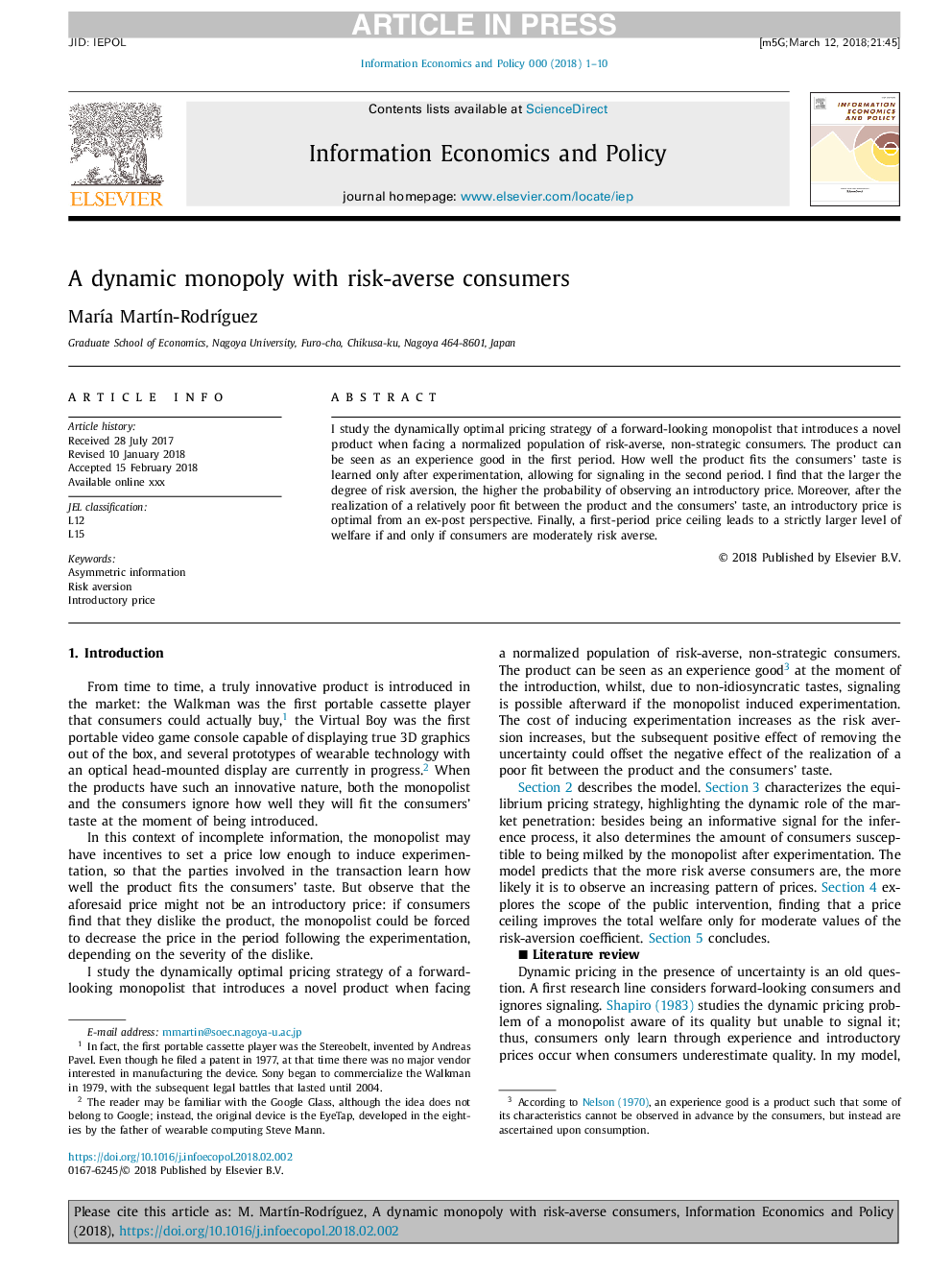| Article ID | Journal | Published Year | Pages | File Type |
|---|---|---|---|---|
| 7354383 | Information Economics and Policy | 2018 | 10 Pages |
Abstract
I study the dynamically optimal pricing strategy of a forward-looking monopolist that introduces a novel product when facing a normalized population of risk-averse, non-strategic consumers. The product can be seen as an experience good in the first period. How well the product fits the consumers' taste is learned only after experimentation, allowing for signaling in the second period. I find that the larger the degree of risk aversion, the higher the probability of observing an introductory price. Moreover, after the realization of a relatively poor fit between the product and the consumers' taste, an introductory price is optimal from an ex-post perspective. Finally, a first-period price ceiling leads to a strictly larger level of welfare if and only if consumers are moderately risk averse.
Related Topics
Social Sciences and Humanities
Business, Management and Accounting
Management of Technology and Innovation
Authors
MarÃa MartÃn-RodrÃguez,
